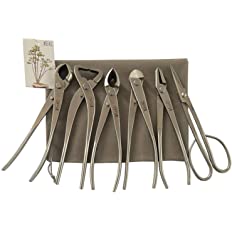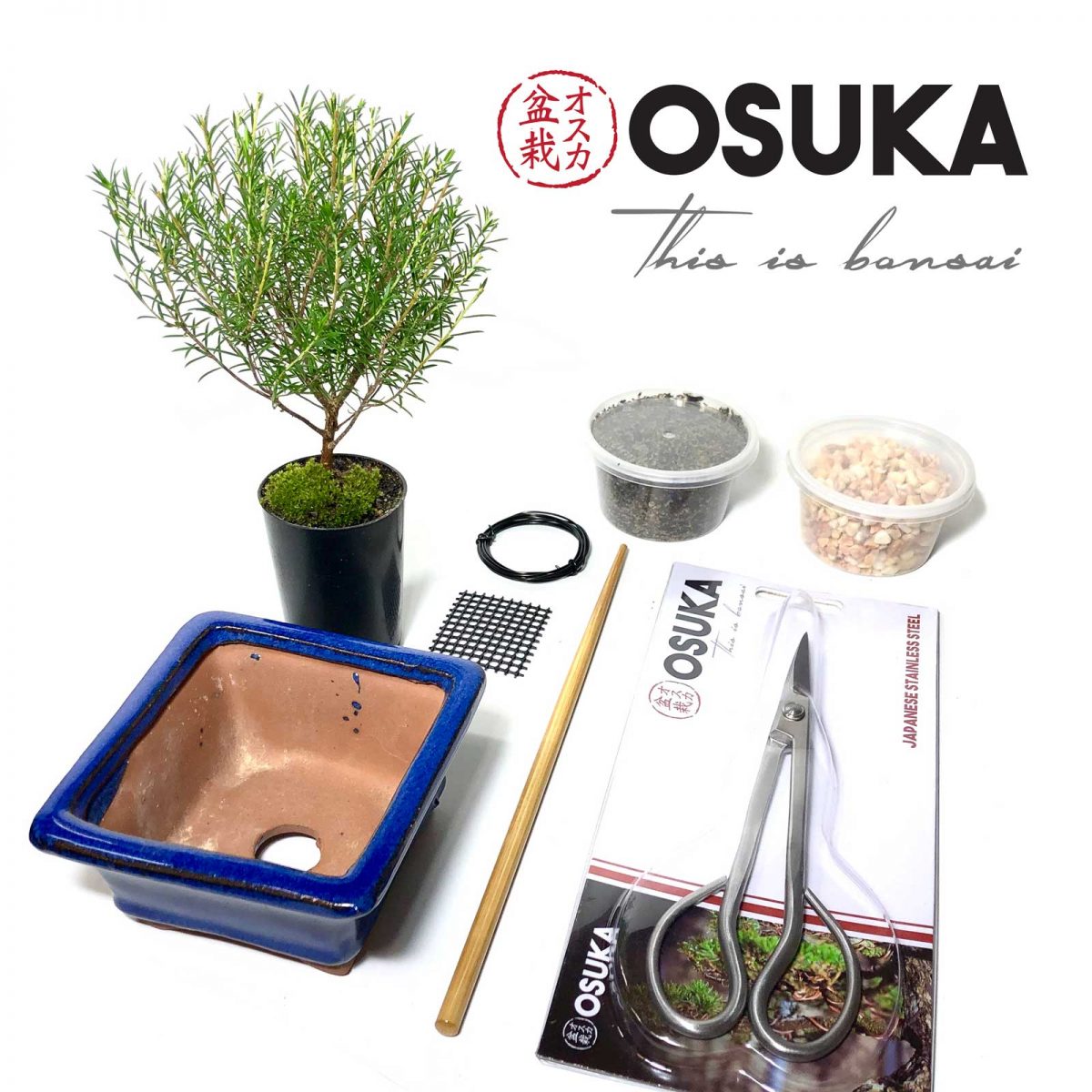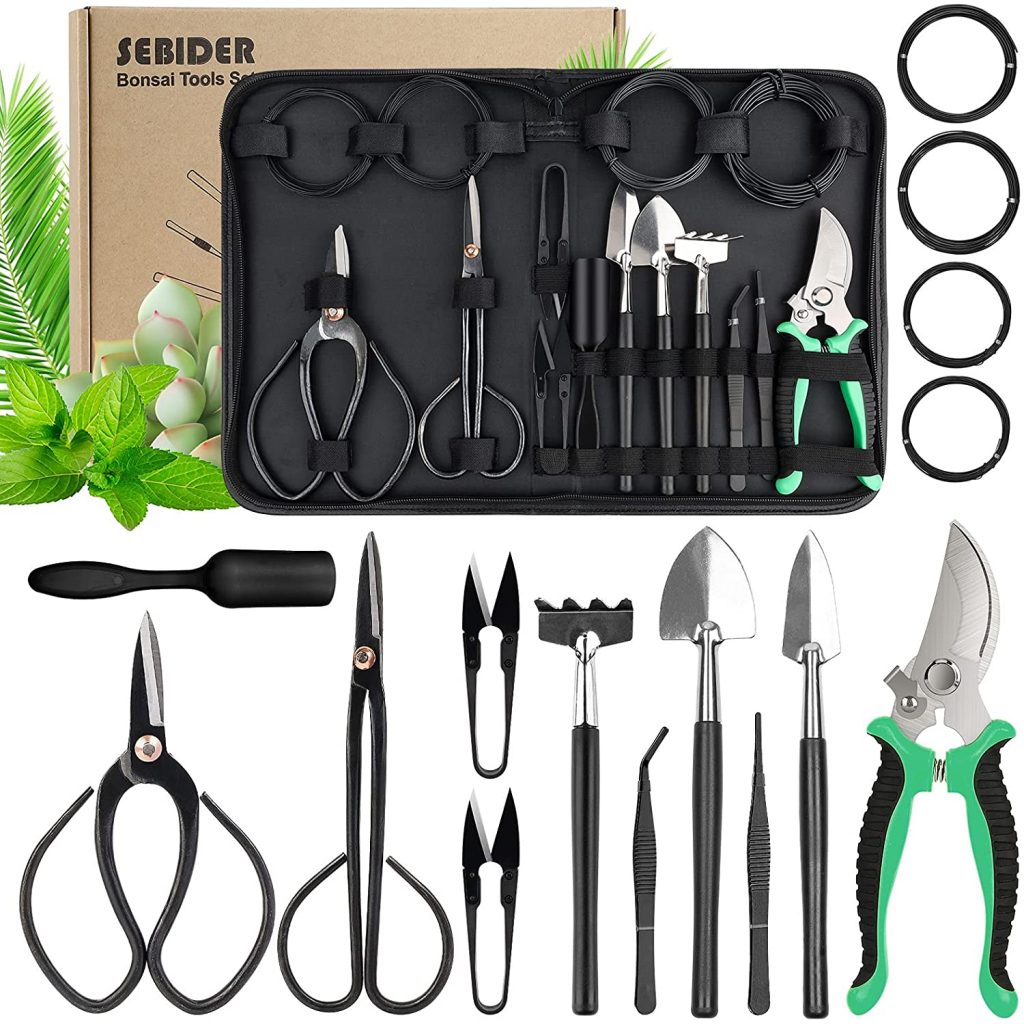Pruning a Small Bonsai Tree: A Comprehensive Guide [2023]
Pruning is an essential aspect of bonsai care, allowing you to shape and maintain the desired form of your small bonsai tree.
Proper pruning promotes healthy growth, encourages ramification, and enhances the overall aesthetic appeal of your bonsai.
In this comprehensive guide, we will walk you through the step-by-step process of pruning a small bonsai tree, including the tools you’ll need, techniques to follow, and tips for success.
Table of Contents:
- Introduction to Pruning
- Tools for Pruning
- Understanding Bonsai Pruning Techniques
- Pruning Guidelines for Small Bonsai Trees
- Pruning Specific Bonsai Species
- 5.1 Juniper Bonsai Tree
- 5.2 Ficus Bonsai Tree
- 5.3 Pine Bonsai Tree
- 5.4 Maple Bonsai Tree
- 5.5 Chinese Elm Bonsai Tree
- Pruning Tips and Best Practices
- Conclusion
Introduction to Pruning
Pruning is the process of selectively removing branches, leaves, or roots of a bonsai tree to achieve the desired shape, size, and overall structure.
It involves making precise cuts to control growth, balance the tree’s energy distribution, and enhance its aesthetic appeal.
Pruning also stimulates new growth, encourages ramification (branch division), and improves the overall health and vigour of the tree.
Tools for Pruning

To perform proper pruning, you’ll need a set of specialized tools designed for bonsai care. These tools include:
Pruning Shears:
Also known as bonsai scissors, these sharp and compact shears are ideal for precise cuts on small branches and foliage.
Concave Cutters:
These specialized cutters have concave blades that create a clean and flush cut, minimizing the scar left on the trunk or branches.
Wire Cutters:
Used for removing or cutting bonsai wire during shaping or training.
Knob Cutters:
Knob cutters have a rounded jaw designed for removing larger branches while minimizing scarring.
Branch Bender:
This tool helps bend and shape branches without damaging them.
Root Pruning Shears:
Used for trimming and pruning the roots during repotting or root maintenance.
Understanding Bonsai Pruning Techniques
Before diving into the pruning process, it’s essential to understand a few key pruning techniques commonly used in bonsai care:
- Pinching: This technique involves using your fingers or bonsai tweezers to pinch off new growth or bud tips. It helps maintain the desired shape and encourages ramification.
- Thinning: Thinning involves selectively removing excess branches, foliage, or needles to improve light penetration and airflow within the canopy. It aids in reducing foliage density and enhances the overall aesthetics of the bonsai.
- Trimming: Trimming refers to the selective cutting of branches to maintain the desired shape and size of the bonsai. It is done using pruning shears or concave cutters.
- Heading Back: Heading back involves cutting back long or overgrown branches to encourage new growth and branch ramification.
- Structural Pruning: Structural pruning focuses on shaping the overall structure and form of the bonsai. It involves removing or redirecting branches to create balance and desired movement in the tree’s design.
Pruning Guidelines for Small Bonsai Trees
When it comes to pruning small bonsai trees, there are some general guidelines to follow:
- Start with Clean and Sharp Tools: Ensure that your pruning tools are clean and sharp to make precise and clean cuts. Disinfect your tools with rubbing alcohol before pruning to prevent the spread of diseases or pests.
- Prune During the Appropriate Season: Pruning timing varies depending on the bonsai species. For deciduous trees, pruning is typically done during late winter or early spring before the buds break. Evergreen trees can be pruned during early spring or after the growth flush.
- Work Gradually: Avoid drastic pruning all at once, especially with young or delicate bonsai trees. Prune gradually over several sessions to prevent stressing the tree.
- Observe the Tree’s Health: Assess the health of your bonsai tree before pruning. Remove any dead, diseased, or damaged branches to promote overall tree health and prevent the spread of infections.
- Maintain the Tree’s Balance: Maintain a balance between foliage and root growth. Pruning should be accompanied by root pruning during repotting to keep the tree in proportion.
Pruning Specific Bonsai Species

Different bonsai species have unique growth patterns and characteristics that influence pruning techniques. Here are some guidelines for pruning specific bonsai species:
5.1 Juniper Bonsai Tree:
- Remove any dead or weak branches to maintain the tree’s vigor.
- Pinch back new growth to encourage branching and foliage density.
- Maintain the tree’s natural shape by carefully pruning selective branches.
5.2 Ficus Bonsai Tree:
- Prune during active growth periods to shape and maintain the desired form.
- Trim back long branches to encourage branching and ramification.
- Pinch off new growth to maintain foliage density.
5.3 Pine Bonsai Tree:
- Prune new growth in spring to maintain the tree’s shape.
- Remove unnecessary buds to balance the energy distribution.
- Reduce the length of candles (new growth) to encourage shorter needles.
5.4 Maple Bonsai Tree:
- Prune during late winter or early spring before buds break.
- Remove inward-growing branches to improve airflow and light penetration.
- Thin out dense foliage to reveal the tree’s structure and enhance branch ramification.
5.5 Chinese Elm Bonsai Tree:
- Prune during late winter or early spring before the buds break.
- Remove excessive growth and branches to maintain the tree’s desired shape.
- Trim back long shoots to promote branching and foliage density.
Pruning Tips and Best Practices
Here are some additional tips and best practices to keep in mind when pruning your small bonsai tree:
- Use proper pruning techniques: Make clean and precise cuts at the appropriate angle to promote healing and minimize scarring.
- Step back and evaluate: Regularly step back and evaluate the tree’s overall form and balance while pruning to ensure you are achieving the desired result.
- Maintain good bonsai hygiene: Remove any fallen leaves, debris, or dead branches from the bonsai pot or soil surface to prevent the spread of diseases or pests.
- Prune for aesthetics and health: While aesthetics play an important role, prioritize the overall health and well-being of the tree when making pruning decisions.
- Learn from experienced growers: Seek guidance and insights from experienced bonsai growers or join bonsai clubs and forums to expand your knowledge and skills in bonsai pruning.
Conclusion
Pruning is a fundamental practice in bonsai cultivation, enabling you to shape and refine the aesthetics of your small bonsai tree.
By understanding the pruning techniques, using the right tools, and following the guidelines for specific bonsai species, you can effectively prune your bonsai to achieve the desired form and promote its overall health and vigour.
Remember to approach pruning with patience and gradually work towards your desired design.
With practice and observation, you will develop the skills and intuition necessary to prune your small bonsai tree with confidence and success.
Where to buy the best pruning tools for your bonsai tree.
There are many online shops and local nurseries to buy your pruning tools.
But our research shows there is one place that is superior for the best pruning tools for bonsai trees.
Happy pruning!

